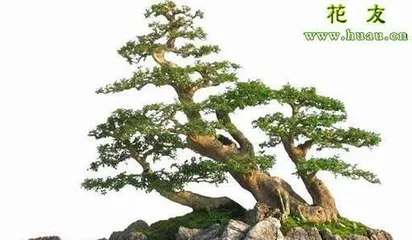Ash bonsai is a beautiful plant with high ornamental value. However, many details need attention during the maintenance of an ash bonsai; if neglected, problems can easily arise. This article will detail the growth habits and care methods of ash bonsai to help enthusiasts manage them with ease.

1. Understanding the Growth Habits of Ash Bonsai
Ash bonsai belongs to the evergreen shrub category, grows slowly, and has various forms. It should be noted that ash bonsai prefers an environment with ample light, humid air, and suitable temperatures.

2. On the Environmental Requirements of Ash Bonsai
The growing environment for ash bonsai requires attention to: suitable temperature, ample light, good ventilation, and appropriate moisture.
3. How to Water Properly?

Ash bonsai has specific watering requirements. The principle of "less water, more thorough soaking" should be mastered to avoid root rot caused by excessive moisture.
4. How to Mist?
Ash bonsai also requires regular misting to maintain suitable air humidity, which is beneficial for healthy plant growth.
5. How to Fertilize?
During its growth process, ash bonsai needs appropriate fertilization. However, excessive fertilizer can negatively affect the plant's growth.
6. How to Prune?
Ash bonsai requires regular pruning to promote the growth of new shoots and the shedding of old branches, thereby maintaining the plant's aesthetic shape.
7. How to Prevent and Control Pests and Diseases?
During maintenance, ash bonsai is susceptible to pests and diseases. Regular prevention and control measures are necessary to keep the plant healthy.
8. How to Transplant?
Ash bonsai needs regular transplantation to maintain healthy growth. During the process, attention should be paid to protecting the root system and selecting the right soil.
9. How to Repot?
During maintenance, ash bonsai also requires regular repotting. When repotting, attention should be paid to soil selection, plant protection, and nutrient replenishment.
10. How to Train?
Ash bonsai needs regular training to maintain its beautiful shape. During training, attention should be paid to the amount of force and the methods used to avoid damaging the plant.
11. How to Loosen the Soil?
During its growth, ash bonsai requires regular soil loosening. When loosening the soil, attention should be paid to protecting the root system, selecting the right soil, and replenishing nutrients.
12. How to Comb?
During its growth, ash bonsai requires regular combing. When combing, attention should be paid to the amount of force and the methods used to avoid damaging the plant.
13. How to Trim?
During its growth, ash bonsai requires regular trimming. When trimming, attention should be paid to methods and techniques to maintain the plant's aesthetic shape.
14. How to Irrigate?
During its growth, ash bonsai requires regular irrigation. When irrigating, attention should be paid to controlling the amount of water and the soil's moisture level.
15. How to Maintain?
During its growth, ash bonsai requires regular maintenance. During maintenance, attention should be paid to the plant's growth status, pest and disease prevention, and environmental hygiene.
Through this introduction, it is hoped that readers now understand the growth habits and care methods for ash bonsai, enabling them to avoid problems during maintenance and ensure the healthy growth of their plants.